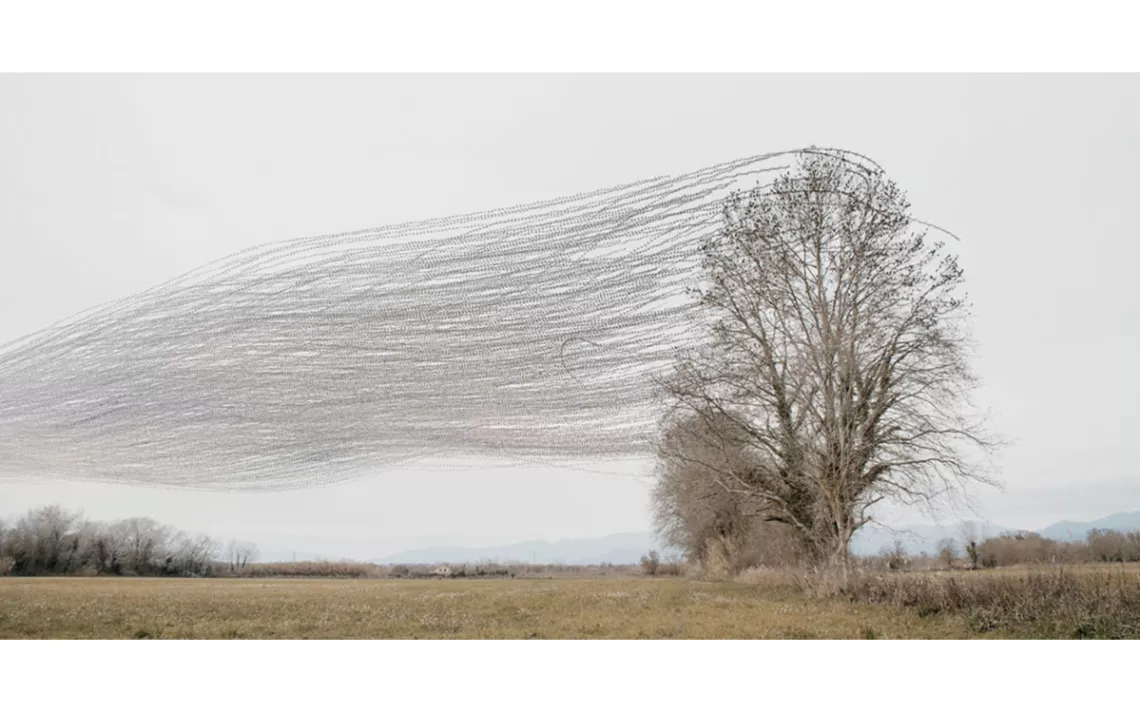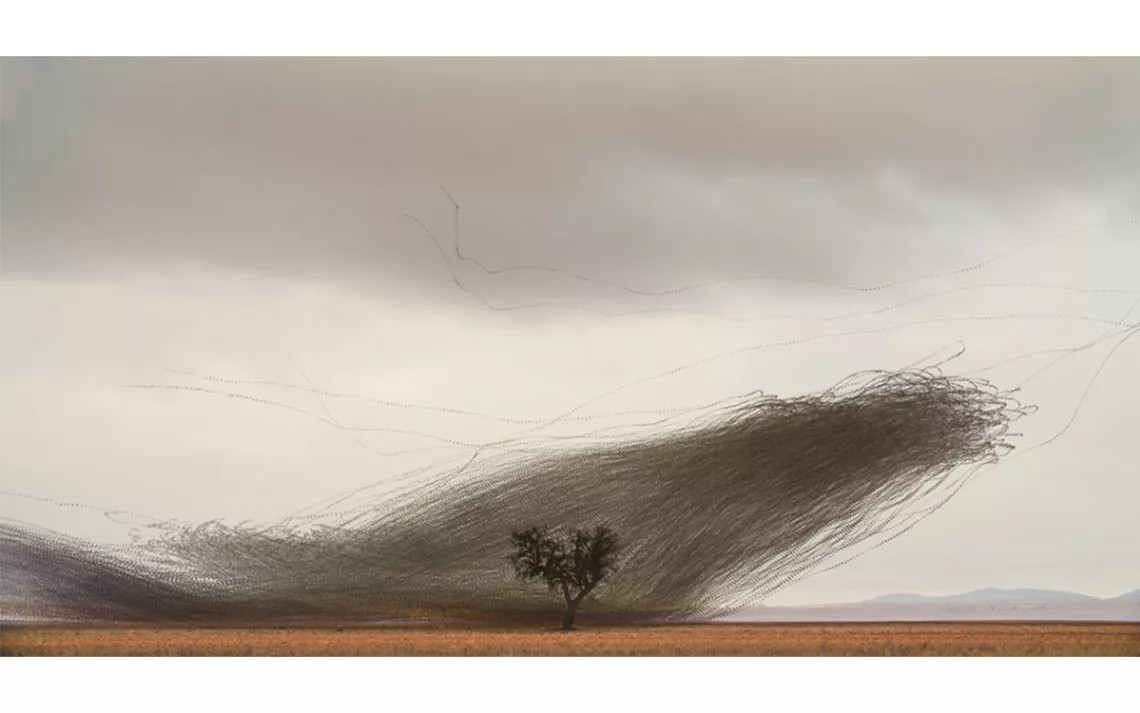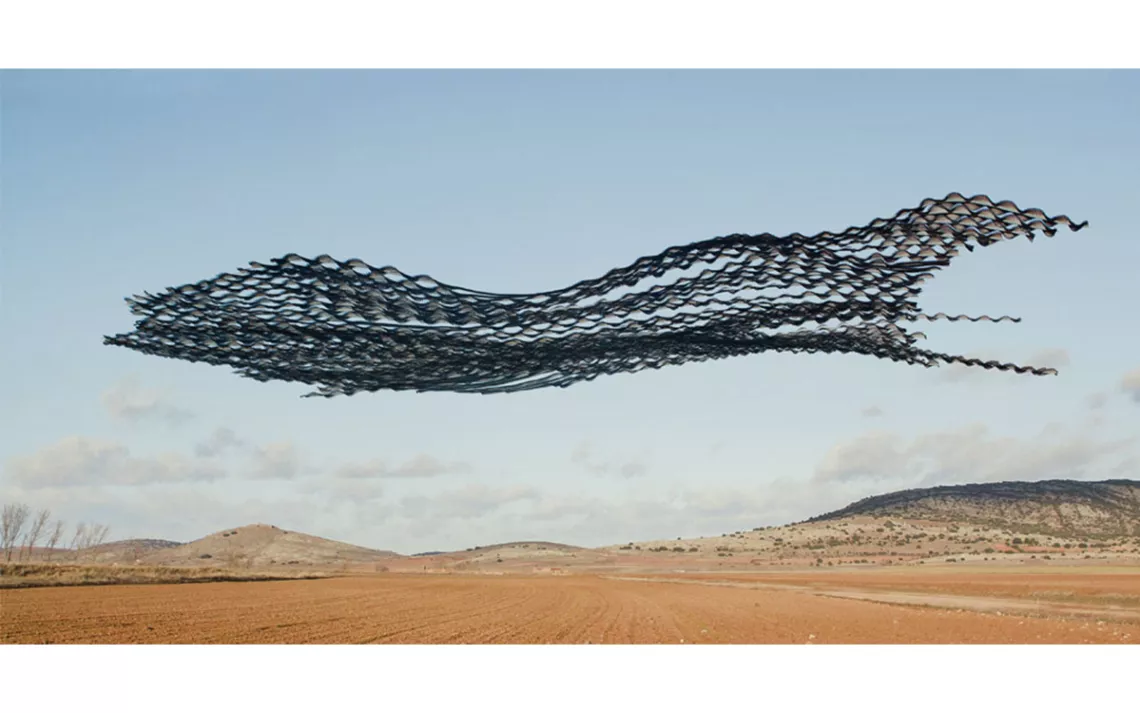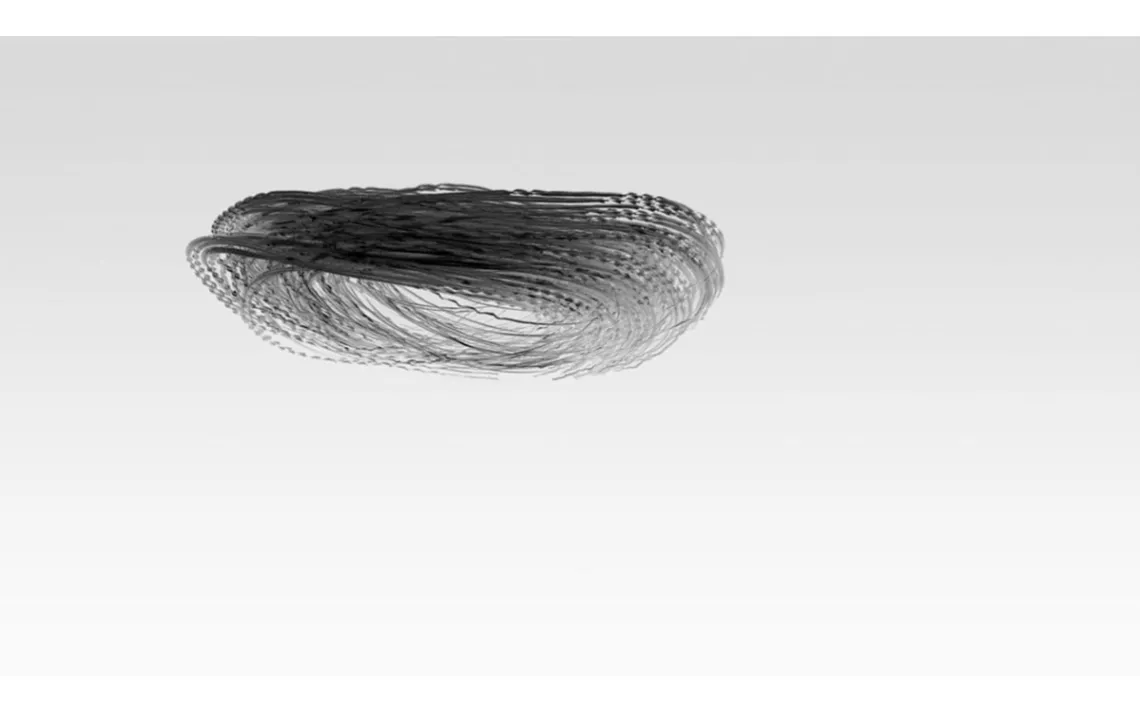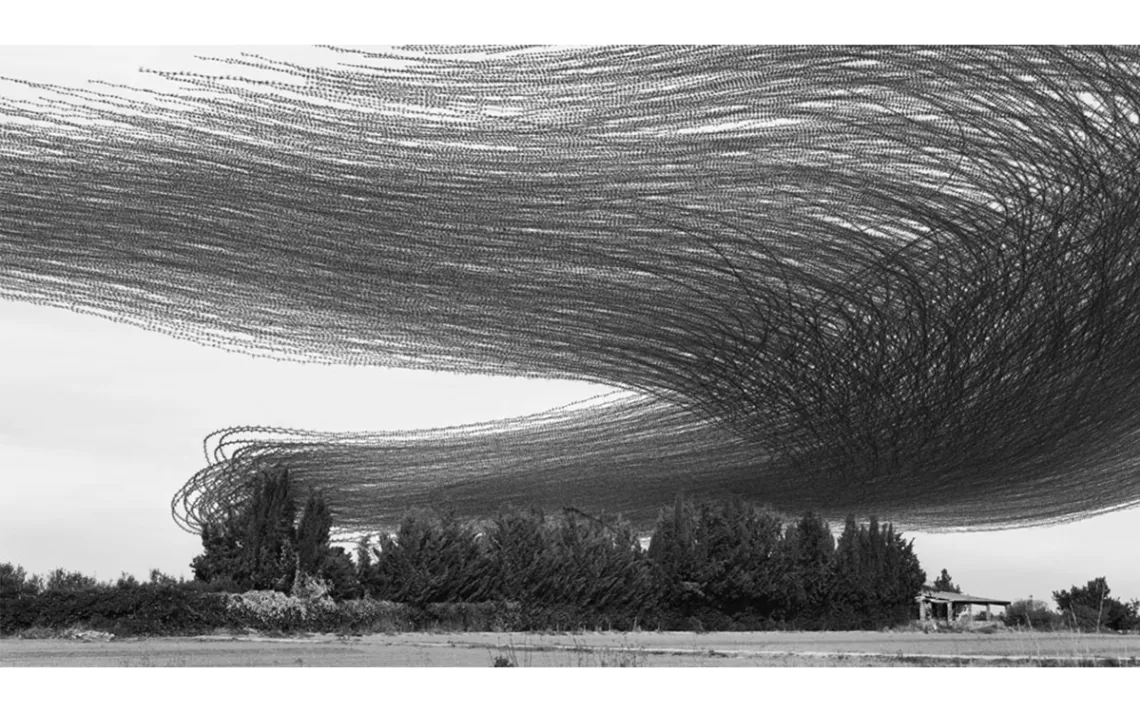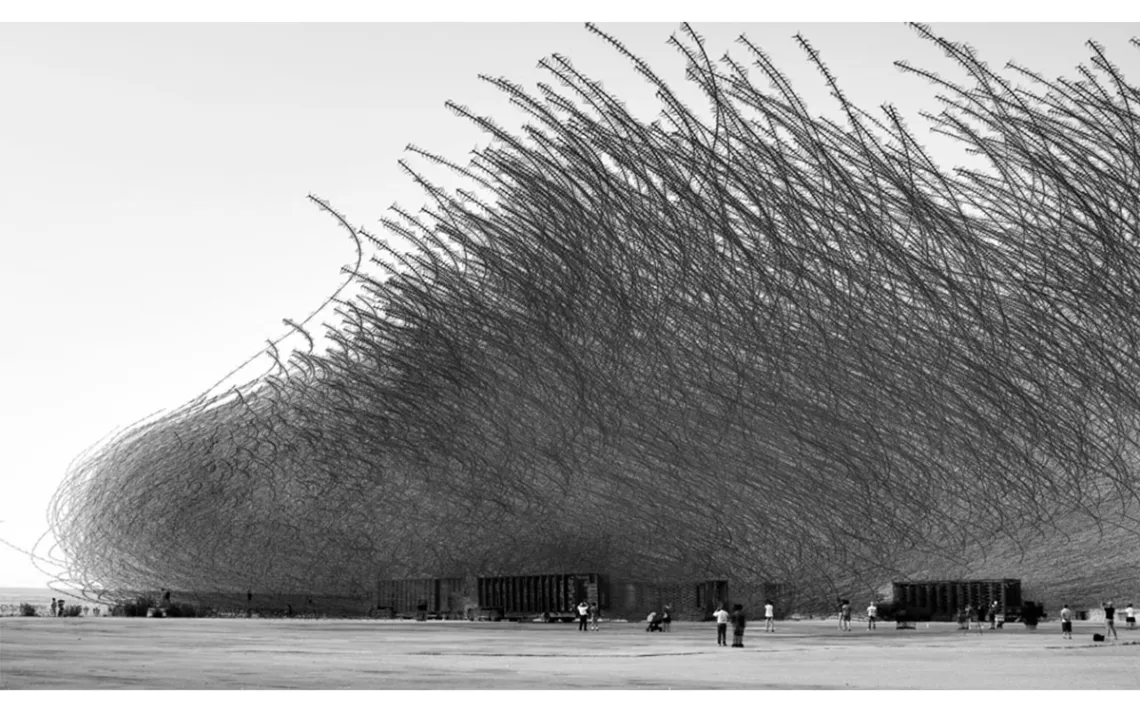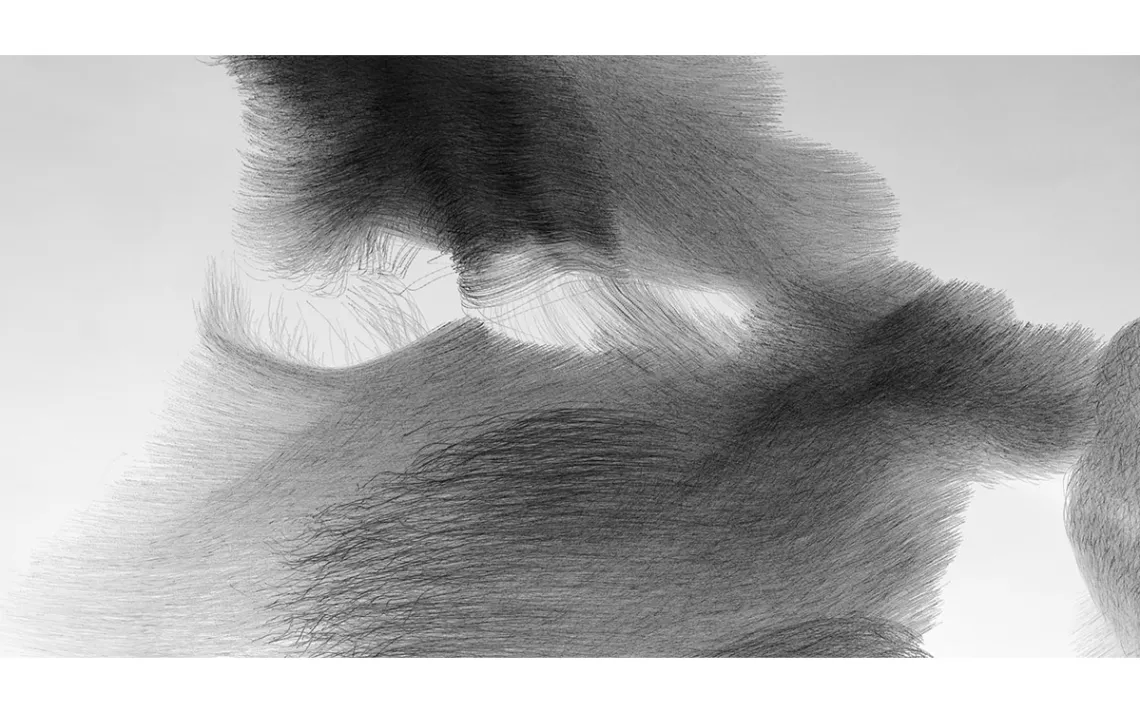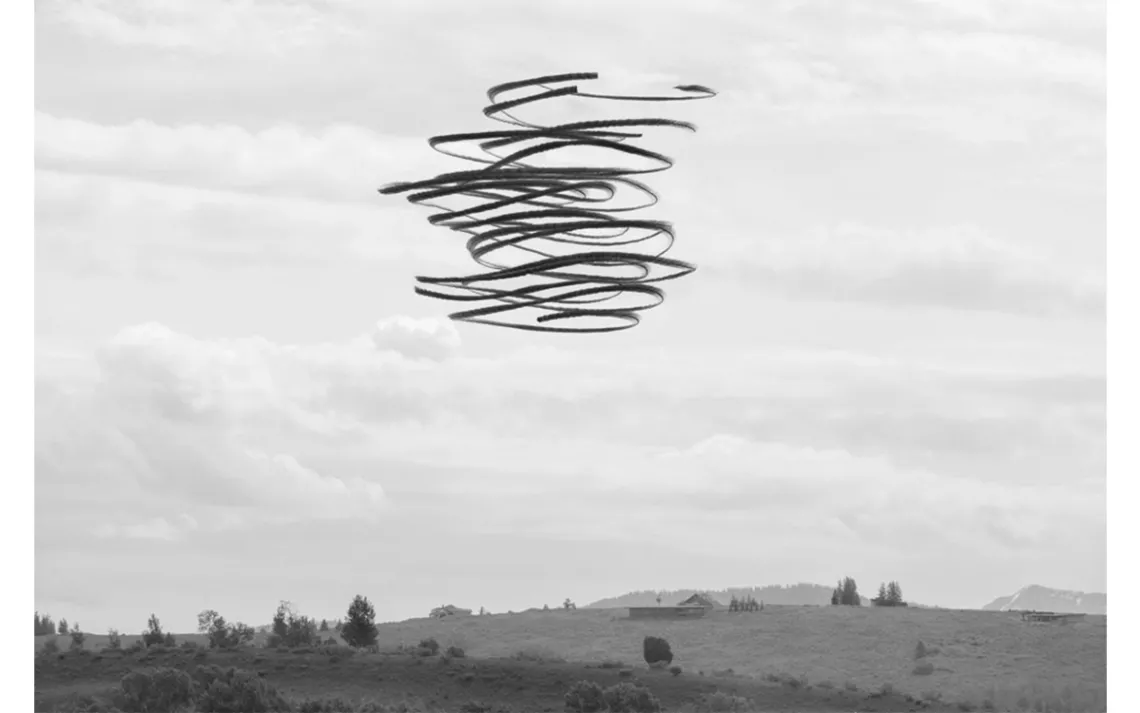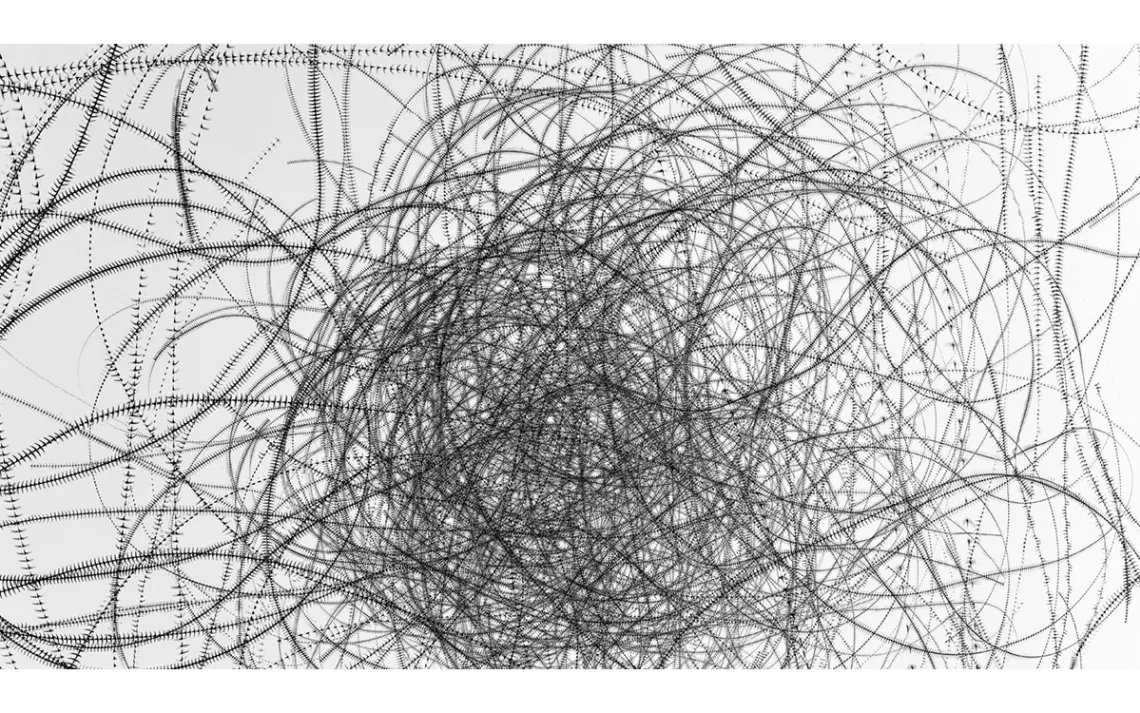How Xavi Bou Captures the Flight of Birds
This Catalan photographer makes the invisible visible
Photos by Xavi Bou
Xavi Bou doesn’t consider himself a typical nature photographer. After all, the images from his ongoing Ornitographies series—bewildering shapes rippling across the sky—appear to be plucked from a sci-fi film rather than National Geographic.
In reality, these photos meticulously illustrate the flight paths of birds: Bou films the creatures as they fly through the air, then digitally stitches individual frames together to create a composite image (each photo typically incorporates between 150 and 1,000 frames). The end result is something akin to an abstract painting. “I’m not creating anything,” he told Sierra. “I’m only making visible something that was created by birds. I look for this choreography and make it visible.”
Bou has dedicated nearly a decade to the unusual project, but before that he worked in commercial photography as a lighting technician and eventually cofounded a post-production studio for brand and magazine campaigns. He also taught at the Grisart International School of Photography, where he received a degree in 2003.
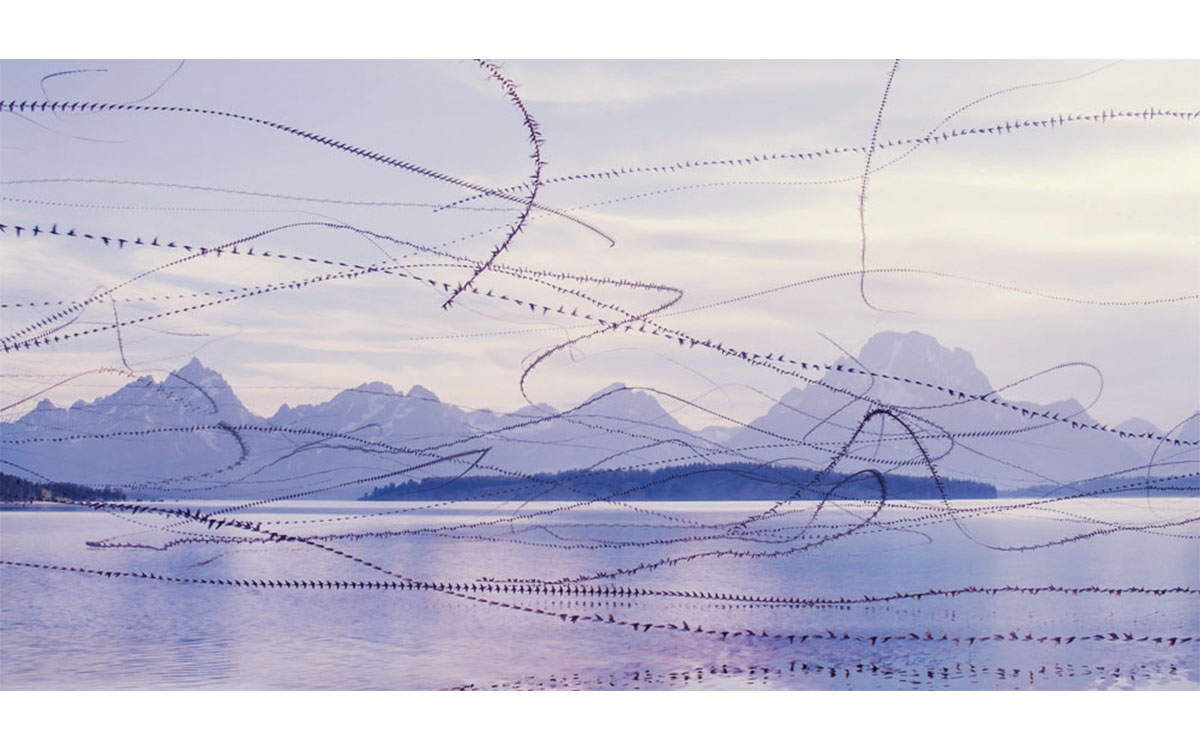
Barn swallow, Jackson Lake Dam, Wyoming
But he’s always had an affinity for wildlife, thanks to childhood strolls with his grandfather in his hometown of Prat del Llobregat in northeastern Spain. There, the wetlands welcome a diverse array of birds like the kingfisher, purple heron, and short-toed lark.
Bou says that by observing the skies with his grandfather, he realized early that each kind of bird produces unique flight patterns. Hundreds of bird species inhabit the Catalonia region, where he shot the majority of his work for Ornitographies.
Bou is also influenced by his geology degree from the University of Barcelona; he studied geology alongside photography. Specializing in paleontology, he enjoyed identifying ancient species by their fossilized tracks. It eventually led him to wonder what “tracks” modern-day birds leave in the sky. “I imagined these lines and I thought it would be interesting if I could make them visible,” he told Sierra. “I researched if this had been done before, and I didn’t find it, so the next step [was]: ‘How can I do it?’”
When he first started the project in 2012, Bou says that he looked for birds with reliable patterns; for example, pelicans, birds of prey, and storks tend to fly upward in a spiral and drift across the sky on thermal currents.
To map out birds’ distinctive aerial journeys, he drew upon the chronophotography method developed in the 19th century by Eadweard Muybridge and made famous in his work “The Horse in Motion.” But, unlike the galloping horse displayed in the Victorian-era side-by-side photos, the birds in Bou’s images are nearly unrecognizable. Bou compares his process, which can take weeks, to traditional film developing, though the final product is far different from the century-old technique that initially inspired him. ”It’s overlapping and you lose the original shape of the bird,” he told Sierra. “The interesting part is that it’s not a picture of a bird; it’s a picture of a movement.”
After mastering this method, Bou set out to record everything from storks to puffins. He traveled to Iceland two years ago and captured the thin line carved out by northern fulmars as they flew against a rugged backdrop of volcanic rock, images eventually published in National Geographic.
Last year, he found himself in Wyoming’s Grand Teton National Park. On his final day of the trip, he traveled by Jackson Lake Dam and stopped to look at the mountains. In a stroke of luck, he spotted a group of barn swallows hunting at dusk and rushed to film them; this produced images of intersecting, zigzagging paths in the foreground of the misty, purple-tinted Grand Tetons.
Though Ornitographies has taken him around the world, Bou hopes that viewers can recognize the beauty of birds and their movements even when sitting at home. He’s particularly drawn to swifts, a “screaming” family of birds that arrive in Barcelona during the spring and early summer. They fly in random directions as they chase after insects, Bou says, which makes for chaotic patterns in his pictures.
Though it’s easy for urban dwellers to ignore nature, he says, the COVID-19 lockdown likely encouraged Barcelona residents to stop and pay attention to these noisy birds. “Of course, with the naked eye we are not going to see these patterns,” he told Sierra. “But I would be happy if people reconnect with nature. It isn’t necessary to travel to Costa Rica to enjoy it.”
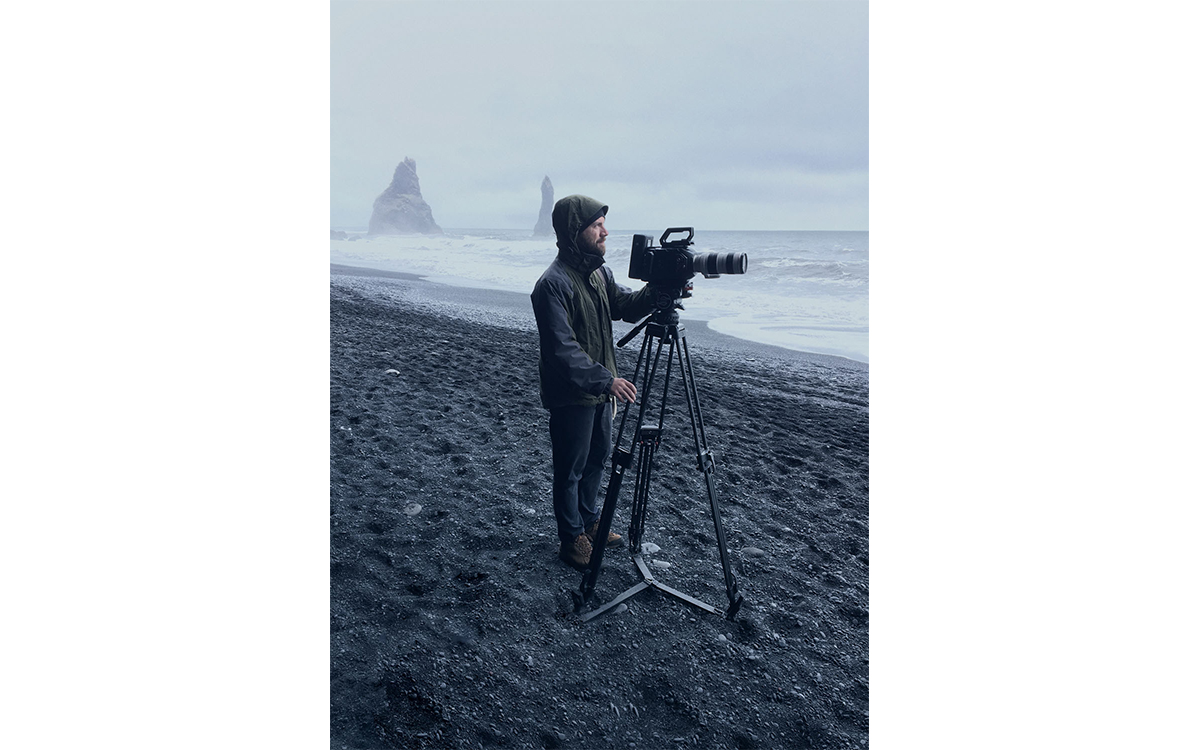
 The Magazine of The Sierra Club
The Magazine of The Sierra Club
